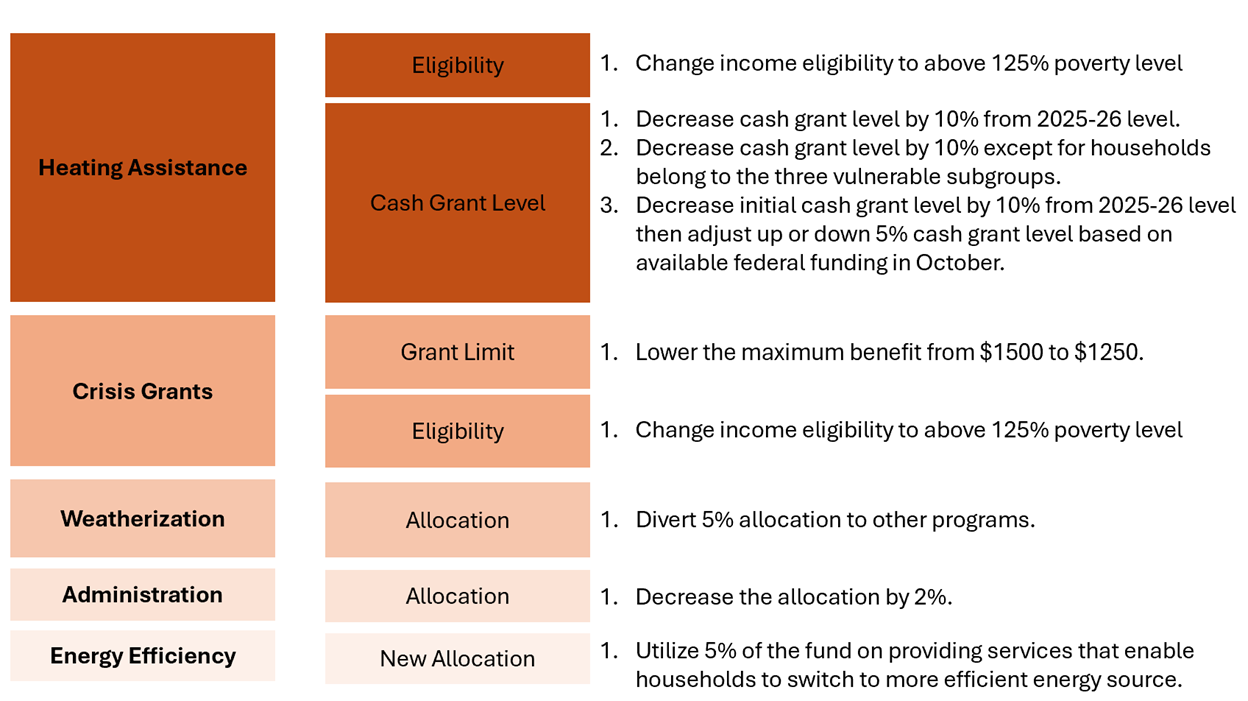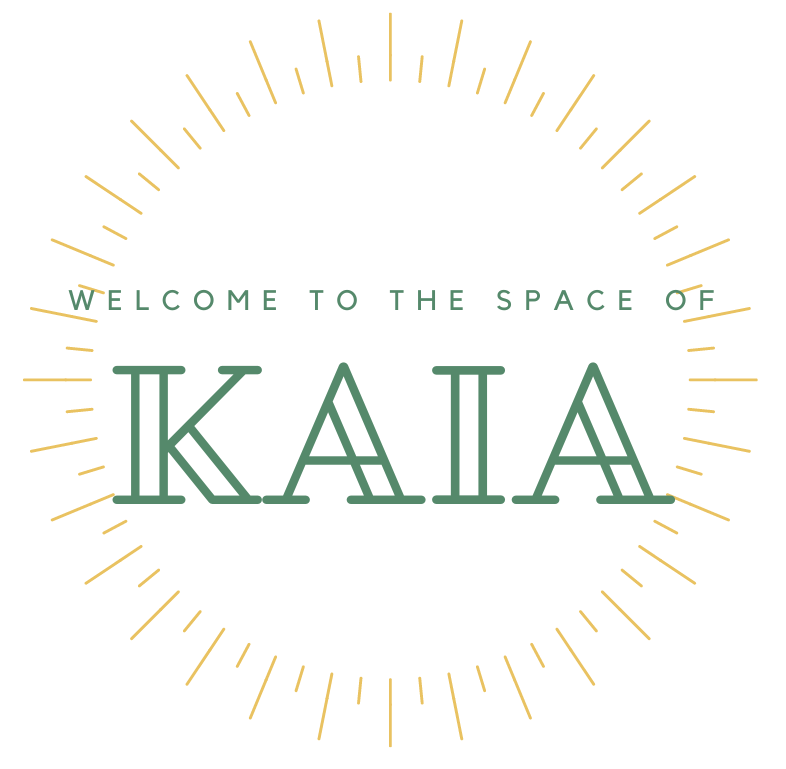Writing Sample
This policy memo was created for a course assignment focusing on designing the 2026-27 Fiscal Year Low-Income Home Energy Assistance (LIHEAP) program for a fictional state. The state has experienced a serious funding deficit for the 2025-26 program and had an early program termination. This memo includes 5 major sections: 1. Early termination of 25-26 program causal analysis; 2. Alternative designs for 26-27 program; 3. Impact analysis; 4. Implementation stategies; 5. Appendix.
Executive Summary of the Issue and Options
This memo provides recommendations for redesigning the state’s 2026-27 Fiscal Year Low-Income Home Energy Assistance (LIHEAP) programs to maximize efficiency and equitable outcomes. The memo will first reflect on the reasons behind the early termination of 2025-26 programs and use the analysis to guide the alternative design goals.
The redesign aims to achieve two primary goals: 1. Keep the LIHEAP spending below the federal funding appropriation. 2. Provide the maximum benefit possible to the state residents who face the highest home energy needs. Two design options are identified that both meet the design criteria, offering distinct advantages based on immediate vs. long-term impacts. The choice between each option depends on the state’s current priority of the first two goals as well as the uncertainties regarding 2026-27 fiscal year’s federal funding estimate.
|
|
Option 1 |
Option 2 |
|
Design |
1. Decrease initial cash grant level
by 10% from 2025-26 level then adjust down 5% cash grant level. |
1.Decrease cash grant level by 10%
except for households belonging to the three high need subgroups. |
|
Reduced Spending |
$13.6 million - $22.7 million |
$6.68 million - $8.68 million |
|
Positive Impact Evaluation |
73,000-77,000 of high-need
households will have 50%+ burden reduction |
120,000-121,000 of high-need
households will have 50%+ burden reduction |
|
Negative Impact
Evaluation |
3400-7400 of households facing
increased burden |
864-936 of households facing
increased burden |
Excerpt of the 25-26 Program Early Termination Analysis
Program Design Modifications in 2025-26 Fiscal Year
There are two layers of reasons that led to the program design modification during the 2025-26 Fiscal Year. First, there was a 6% expected increase in federal funding, backed by the state’s Congressional Delegation. Second, since federal law only permits the state to carry over 10% of the total allocation to the following year, if unused, there would be pressure to spend as much of the total federal allocation as possible. Thus, the state raised benefit levels and expanded eligibility limits. Specifically, the income eligibility for the Heating Assistance program was changed to 150% of the Federal Poverty Level (FPL) from 125%, and the cash grant level was also increased by 10% over the 2024-25 level. The same income eligibility change was also applied to the Crisis Assistance Program. Though there were no major design changes to the Weatherization program, $15.3 million was transferred to the Department of Community Assistance (DCA), a roughly 6% increase from the average spending on this program between 2022 and 2025. However, since the state is allowed to spend up to 15% of the federal funds on weatherization, instead of making big and unchangeable modifications to the other two programs, it could have waited till it received the federal funding and then increased allocation on weatherization if there is risk of returning unused funds.
Excerpt of the Alternative Designs Section
To consider alternative designs on all elements of the LIHEAP program, this memo will explore different options for Heating Assistance, Crisis Grants, and Weatherization programs, as well as potential allocation modifications on Administration and Assurance, the latter of which was not appropriated in 2025-26 program.
Potential changes to the Heating Assistance program and the Crisis Grants program can be divided into two general approaches: changing eligibility or changing benefit level. With the “changing eligibility” approach, alternative designs for both programs include changing income eligibility limit from above 150% federal poverty level in 2025-26 to 125% poverty.
With the “changing benefit level” approach, there are more diverse alternative options. First, the state could introduce an overall reduction in cash grant levels. Specifically, the Heat Assistance program could decrease cash grant level by 10% from 2025-26 level, or the Crisis Grants program could lower the maximum benefit from $1500 to $1250. Second, to take into consideration of maximizing benefit for residents with the highest needs, the Heat Assistance program could keep cash grant level the same at 2025-26 level for the three vulnerable subgroups defined above while decreasing by 10% for other residents.
Third, while the Crisis Grants amounts are determined by applicant needs, and therefore it is hard to adjust the benefit amount standard during the program year, the Heating Assistance program has such flexibility. Thus, another potential alternative design for the Heating Assistance program includes decreasing initial cash grant level by 15% from 2025-26 level then adjust cash grant level to up to 2025-26 level based on available funding and application volume in October & November.
For alternative designs on the Weatherization program, one approach is diverting partial allocations to other programs. Currently, about 10% of the state’s total LIHEAP allocation is sent to the state Department of Community Assistance (DCA), yet there is no required minimum allocation. Since this allocation only makes up a third of the total state’s funding on the Weatherization Program, and two of the neighboring states currently only allocate 5-6% of their LIHEAP funding on this program, decreasing the allocation of LIHEAP on weatherization to 5% could be justifiable and avoid major cut-back on the Heating Assistance Program funding. Specifically, this level of diverting allocations could increase the funding for the Heating Assistance Program by around 10%.
Similarly, the state could also decrease 2% of allocations from Administration to increase savings. Decreasing budget for administration could be much more difficult compared to weatherization as the program requires sufficient management and governance, and neighboring states mostly spend at least 8.5% of the total funding on administration.
Lastly, since one of the vulnerable subgroups are experiencing high sources expenditures due to inefficient fuel choice, it might be worthwhile to create new allocations of up to 5% to improve energy efficiency by providing services to enable households that rely on propane and fuel oil for heating to switch to electric or natural gas furnaces, which are more efficient energy sources.
Below is a chart summarizing all the alternative designs that will be explored in this memo.

To read the quantitative analysis part of the memo, please check out the whole memo below.
